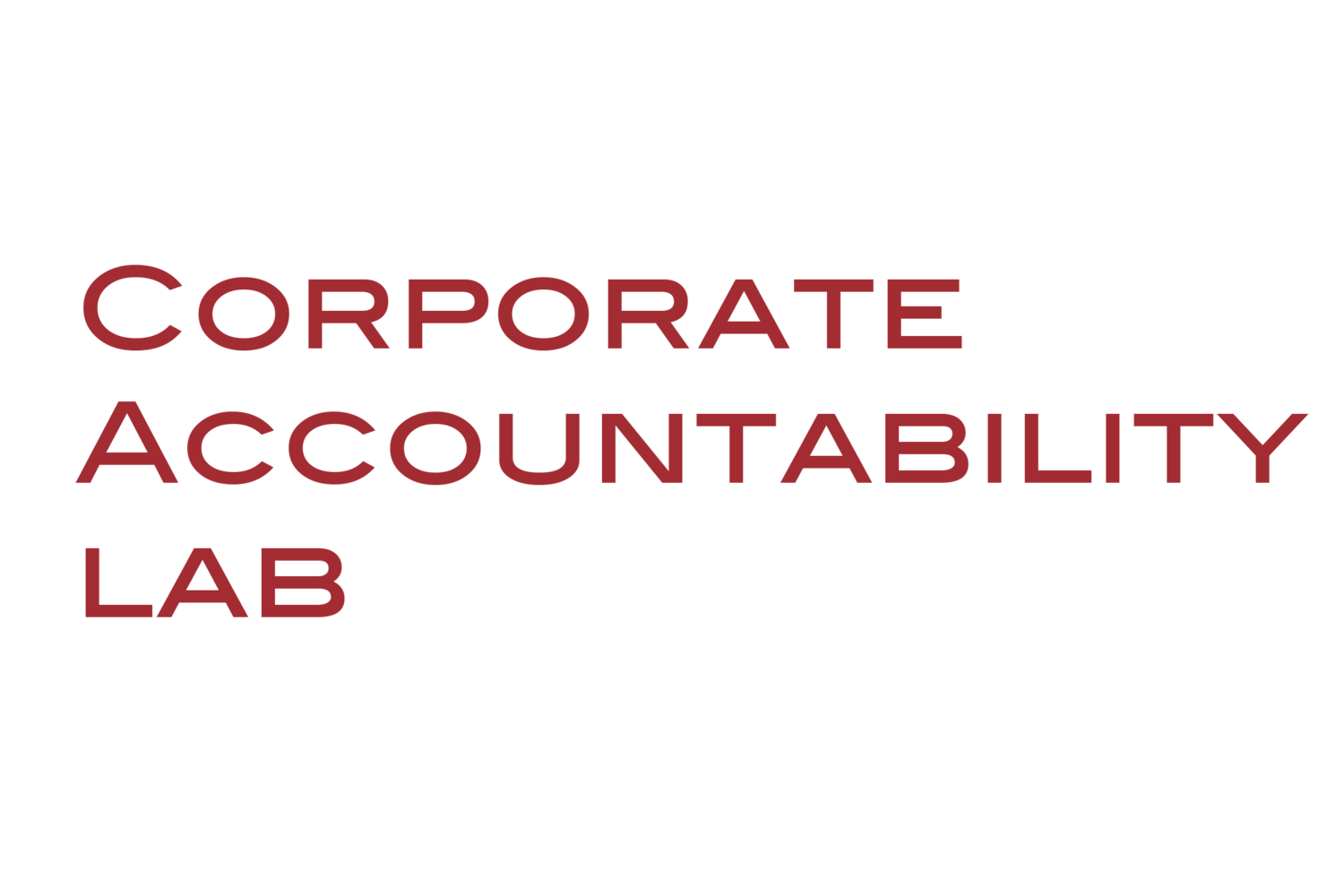Human Rights Legal Design: CAL’s approach to developing innovative strategies for corporate accountability
Despite increased public awareness, the legal, economic, and political power of multinational companies continues to expand, resulting in reduced regulation and decreased liability for corporate abuses. Lawyers and activists must be agile and responsive to this ever-changing world if we are to tackle this complex problem. CAL uses a legal design process to foster that creativity and create a stronger set of protections for people and the planet.
Legal design applies design thinking to issues that are legal in nature. But what exactly is design thinking? Basically, it’s a purposeful way of thinking and working with others that is intended to spark creativity and generate new solutions to old problems. By being intentional about how you conceptualize a problem and, in turn, how you choose a strategy to address that problem and test it out, you can discover solutions that are novel and more effective than strategies that have been tried before and can avoid wasting resources on ineffective strategies. And that is exactly what we need right now, as our arsenal of strategies to hold companies accountable is dwindling.
Design thinking developed primarily for product design in a commercial context (think: creating a cool new gadget to meet consumer needs). But innovators in many different fields are beginning to apply design thinking to contexts across many different sectors. (There are a couple of great organizations that have been pioneers in these areas, including the Stanford d.school and the Legal Design Lab.)
Within the growing legal design community, CAL does things a little differently. There are few, if any, organizations in the world using legal design to address human rights and environmental abuse by corporations across global supply chains. That’s where we come in.
CAL’s process takes design thinking as a starting point and adapts it to generate legal strategies to solve some of the most pressing human rights and environmental issues of our time. We use this method because CAL works on complex issues that require multifaceted solutions. Projects aimed at systemic change need space to grow and evolve over time as we learn more about the systems, the stakeholders, and how they interact with each other. CAL’s legal design process provides the time and space to collaborate, discuss, think, try out ideas, and then go back and change, adapt, and test ideas again.
Connect: Solving massive, complex, transnational human rights issues “takes a village.” We need to get a lot of different people in the room to understand the problem better. Those people would need to have many different backgrounds, experience with the problem and areas of expertise. By pooling their knowledge, we can better diagnose the root cause or causes. So more people, more diversity, more collaboration, better strategies.
1. Understand the system: research, map, engage users, analyze, critique, empathize
Systems analysis is not a design concept. But to deal with a big systemic problem, you need to understand a system as a sum of component parts and avoid attempts to oversimplify or reduce the problem.
2. Define the problem: identify root causes
To understand the problem, we need to find out who has the problem and how they perceive it. We need to have empathy for those who will use or benefit from the solution we are designing in order to ensure that what we are working on will actually make their lives better.
3. Ideate the strategy: no rules
When we “ideate,” we remove constraints, both practical and ethical. We shut down that “no” voice that law school drilled into us, and tune in to the “yes” voice that lets us make our worst ideas public. Sometimes on the other side of a very bad idea is a great one--one that is practical, affordable, and ethical (even if our bad idea was none of these things).
4. Prototype the strategy: pre-testing and consult users
This is a step beyond brainstorming, where we develop the ideas more fully. They are often still fast prototypes, done in a variety of ways like drawing eight windows on a sheet of paper and diagramming the process start to finish. It allows us to fail in a small, safe environment. At this stage, we are also consulting with partners and potential users, getting necessary feedback, input, ideas, and critiques.
5. Test the strategy: implement the strategy, file cases, analyze results, evaluate impact
Within the CAL version of legal design, testing is really hard. It’s long, labor intensive, and sometimes frustrating. Unlike testing a new product (“hey consumer, do you like this thing?”), a “test” for us often involves getting a use case or filing a case in court. But complex problems often require complex solutions, so in our line of work a difficult testing process is to be expected.
Use your failure, use your success: celebrate, document, refine, adapt, amplify, start over, keep trying
“Failure” in design thinking is just disproving a hypothesis. Which is to say, it’s a terrific opportunity to learn. When we succeed, we work with partner organizations to amplify and scale up the strategy. When we fail, we push the strategy back into the design cycle to see if we can rework it into a success. We believe that the key to success is to keep trying, despite repeated failures.


